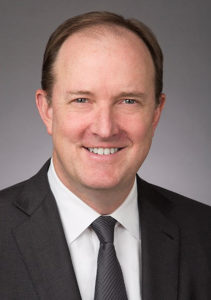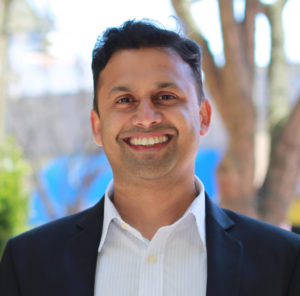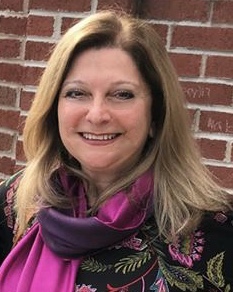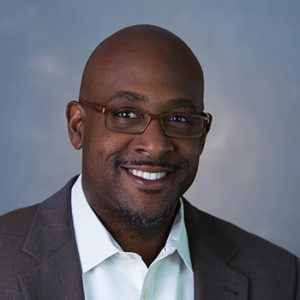 Progressive Voice is a weekly opinion column. The views and opinions expressed in the column are those of the individual authors and do not necessarily reflect the views of their organizations or ARLnow.com.
Progressive Voice is a weekly opinion column. The views and opinions expressed in the column are those of the individual authors and do not necessarily reflect the views of their organizations or ARLnow.com.
By Maura McMahon
People familiar with the Federalist papers may see James Madison’s factionalism alive and well in Arlington’s governance and citizen advocacy today. It is borne out in colored t-shirts, divisive rhetoric, project delays and failures to make bold decisions. It is personified by the ongoing “North” v. “South” Arlington discourse and evident in the demographic differences of our neighborhoods and schools.
Factionalism should not fuel our decision-making. Limited assets, needs of a growing population, and operating costs of an expanding school system have come to a head. Disconnected planning and out-of-sync budgets and processes preclude our ability to efficiently serve common interests:
- The Neighborhood Conservation Advisory Commission (NCAC) emphasizes neighborhood-specific interests, pitting neighborhoods against each other without prioritizing concerns.
- Development projects that over-emphasize site-specific matters and neighbors’ preferences fail to maximize benefits to the larger community. Opportunities are lost due to leaders’ reluctance to operate outside familiar norms or to engage private developers in addressing the full implications of a project’s impact.
- Decision timelines that are out of sync with appointed working group schedules or charges dilute the importance of broad community input, ignite civic distrust, and prolong real solutions.
For instance, a delay in establishing the Career Center Working Group (CCWG) put its work off-track of a crucial budget process. Critical decisions were rushed and based on incomplete information before the group’s work concluded. The relevance of more than 30 community volunteers’ and staff members’ time and effort was put into question.
The Career Center site is approximately 12.5 acres and home to Patrick Henry Elementary School, Arlington Community High School, Arlington Tech, numerous academic programs within the Career Center, and the Columbia Pike public library. Since January, CCWG has worked to develop a plan to add 800 seats to the Career Center facility and evaluate how to optimize future development on the site, including amenities for a possible fourth high school.
The complexity of redeveloping this parcel illustrates the necessity to look beyond the immediate school needs and to employ coordinated planning. It is a prime prospect for a new Arlington Way: re-prioritizing County projects to synchronize planning across departments and Arlington Public Schools (APS), providing maximum benefits to various stakeholders, and meeting critical needs in a more timely and cost-effective way.
Such an approach could simultaneously extend the range of benefits beyond schools to Parks and Recreation, transportation services, the public library, commercial development, and the vision for a revitalized Columbia Pike.
Arlington County says its Comprehensive Plan “… is one of the (County’s) most important decision-making and priority-setting tools” and guides “coordinated development.” But it is comprised of several plans for an array of independent concerns and does not include APS.
By integrating schools and the various County priorities:
- The county’s Creative Preschoolers program could work with APS to expand preschool access;
- Urban Forestry could help APS and the county create natural playgrounds with interactive play elements to complement science and physical education curriculum and enhance benefits gained from exposure to nature;
- The county could revise permitting processes to reduce school construction costs and timeframes;
- Transportation could coordinate bus routes for secondary students, in turn expanding transit services for all residents and enabling APS to extend existing bus resources to its growing elementary enrollment;
- The county could implement zoning and housing policies that generate economically diverse neighborhoods and schools, reducing disparities and maximizing opportunities;
- County and School Boards could cooperate to eliminate obstacles that prevent the optimal use of existing sites and facilities.
Madison cited “factionalism” as a threat to sound public policy. Today, the Joint Facilities Advisory Committee and Advisory Committee on Transportation Choices are steps forward. But the County can make swift progress through smart inter-departmental planning. APS can accomplish more by employing holistic decision-making and a long-term vision. As citizens, we can reject factionalism and unite around our common goals.
Collectively, we can reaffirm Arlington’s standing as a leader in progressive governance and community engagement, turning opportunities like the Career Center site into models of exceptional achievement instead of exercises in frustration and divisiveness.
Maura McMahon is the mother of two children in Arlington Public Schools. An Arlington resident since 2001, she has served in numerous capacities including the Thomas Jefferson, South Arlington, and Career Center working groups. McMahon is president of the Arlington County Council of PTAs.










